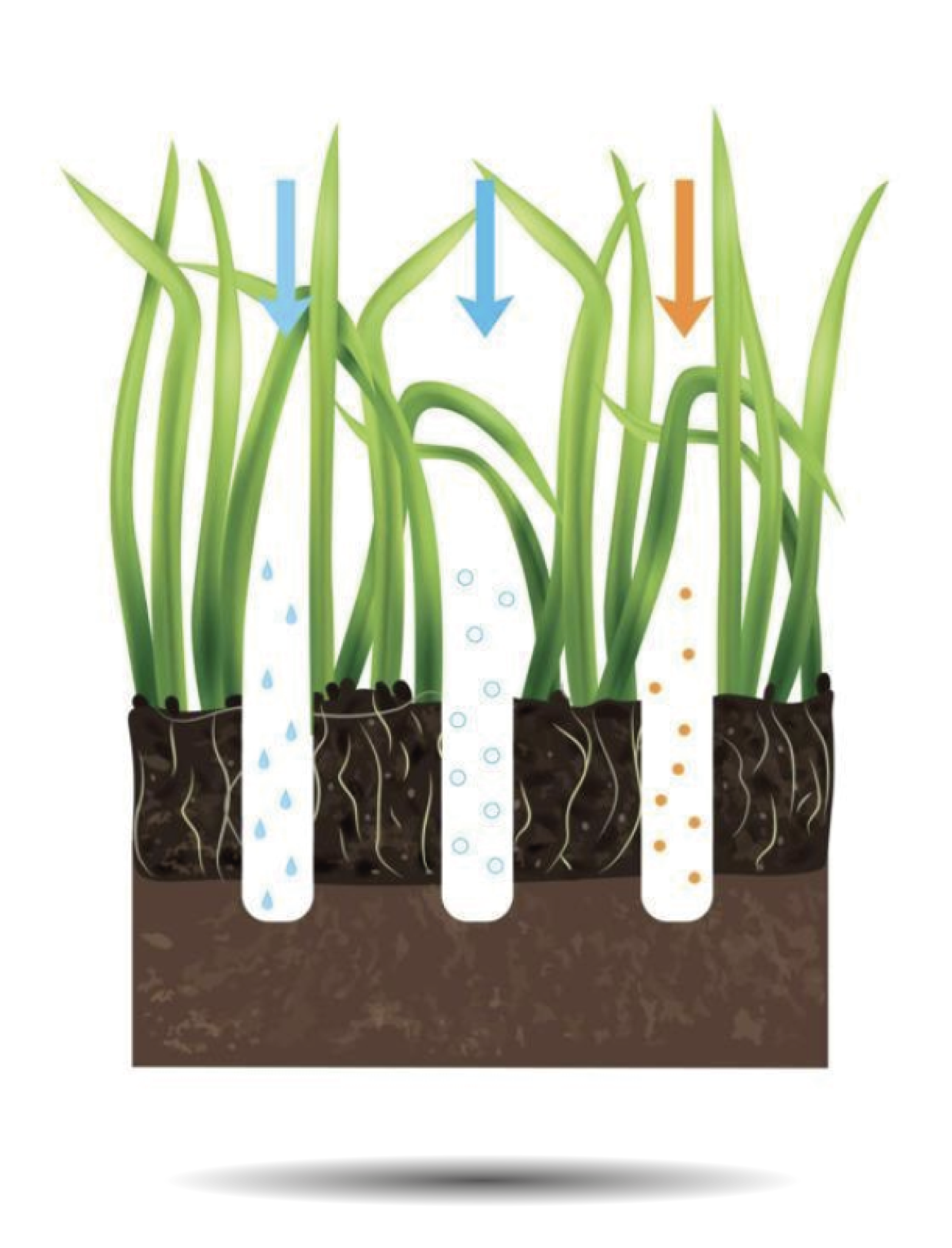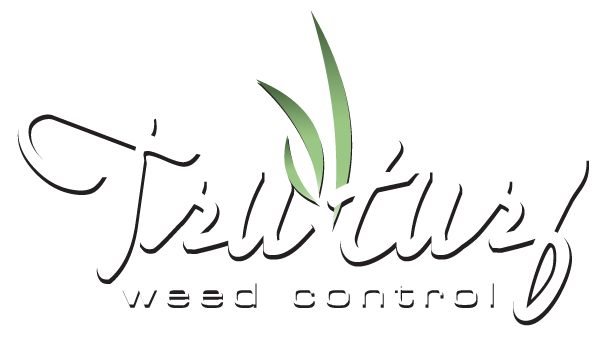AERATION
COMMERCIAL & RESIDENTIAL SERVICES

Ensure your lawn is in the best possible condition with Tru-Turfs quality aeration services.
Aerating your lawn can help to reduce thatch, increase moisture retention and improve the overall quality of your lawn.
What is Aeration?
Aerating your lawn stimulates deep root growth ensuring a strong and more luscious lawn. Aerating is the task of perforating the turf and soil with small holes, to allow for air, water and nutrients to permeate. When your soil becomes too compact from heavy use or density, it can prevent water and nutrients from being properly absorbed and essentially starve your lawn.
Spring is the time to analyze the condition of your soil. If there is too much heavy clay in it, aeration is the best solution.
Fall is a great time to aerate as it helps to ensure oxygen and water get into your soil and into your lawn. Ideally, aerating should typically be done twice a year.
Core aeration will save you money by reducing your maintenance needs. Benefits Include:
- Increased oxygen deeper in the soil where grass roots reside.
- Promoted soil water uptake and reduced water runoff and pooling.
- Improved fertilizer uptake and less wasted product.
- Reduced soil compaction allows for stronger roots and better growth.
- Lower heat and drought stress damage.
- Enhanced resiliency and cushioning under each step.
- Promoted thatch breakdown through organic microbial decomposition.
Ensure your lawn is in the best possible condition with Tru-Turfs quality aeration services.
Aerating your lawn can help to reduce thatch, increase moisture retention and improve the overall quality of your lawn.
What is Aeration?
Aerating your lawn stimulates deep root growth ensuring a strong and more luscious lawn. Aerating is the task of perforating the turf and soil with small holes, to allow for air, water and nutrients to permeate. When your soil becomes too compact from heavy use or density, it can prevent water and nutrients from being properly absorbed and essentially starve your lawn.
Spring is the time to analyze the condition of your soil. If there is too much heavy clay in it, aeration is the best solution.
Fall is a great time to aerate as it helps to ensure oxygen and water get into your soil and into your lawn. Ideally, aerating should typically be done twice a year.
Core aeration will save you money by reducing your maintenance needs. Benefits Include:
- Increased oxygen deeper in the soil where grass roots reside.
- Promoted soil water uptake and reduced water runoff and pooling.
- Improved fertilizer uptake and less wasted product.
- Reduced soil compaction allows for stronger roots and better growth.
- Lower heat and drought stress damage.
- Enhanced resiliency and cushioning under each step.
- Promoted thatch breakdown through organic microbial decomposition.
A good rule is to aerate your lawn in the fall and then in the early growth season of the spring. The treatment only takes about as long as it usually takes to mow your lawn.
We recommend that you leave these plugs and allow the lawn to reabsorb them. Through watering and mowing, the plugs will naturally disintegrate and return to the aeration holes. Usually the process takes a week or two. Leaving the plugs helps protect the new root systems that are developing in the holes and creates a healthier yard.
Aerating is like a deep tissue massage for your lawn. The process enables water, fertilizer, and other nutrients easier access to the roots, promotes growth, breaks up compacted soil, and increases drainage.
Allow the soil plugs or extra soil dry where they fall as they’ll break down in rain or crumble the next time you mow, adding beneficial soil and organic matter to your lawn surface. Seeds and nutrients have direct contact with soil through the openings your aerator created and roots have fresh pathways for the things they need.
Right after aeration is a perfect time to overseed and fertilize for quick seed establishment and thicker, lusher growth.
A good rule is to aerate your lawn in the fall and then in the early growth season of the spring. The treatment only takes about as long as it usually takes to mow your lawn.
We recommend that you leave these plugs and allow the lawn to reabsorb them. Through watering and mowing, the plugs will naturally disintegrate and return to the aeration holes. Usually the process takes a week or two. Leaving the plugs helps protect the new root systems that are developing in the holes and creates a healthier yard.
Aerating is like a deep tissue massage for your lawn. The process enables water, fertilizer, and other nutrients easier access to the roots, promotes growth, breaks up compacted soil, and increases drainage.
Allow the soil plugs or extra soil dry where they fall as they’ll break down in rain or crumble the next time you mow, adding beneficial soil and organic matter to your lawn surface. Seeds and nutrients have direct contact with soil through the openings your aerator created and roots have fresh pathways for the things they need.
Right after aeration is a perfect time to overseed and fertilize for quick seed establishment and thicker, lusher growth.


